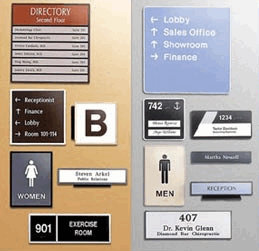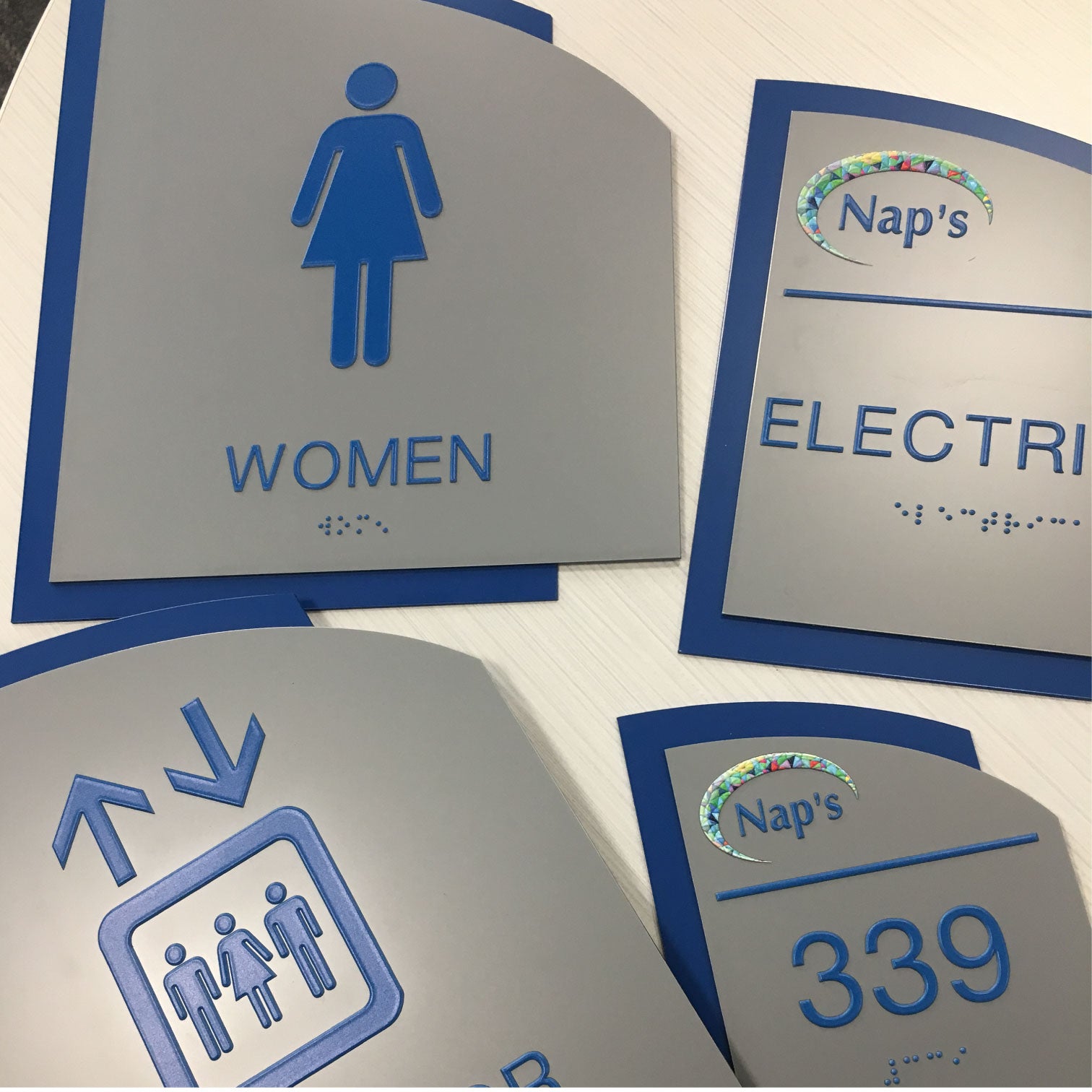ADA Signs: Making Certain Accessibility and Conformity in Public Spaces
ADA signs plays a vital function in guaranteeing ease of access and compliance within public spaces, substantially adding to an inclusive setting for people with handicaps. As we check out the nuances of ADA signs, from tactile functions to develop details, it's crucial to consider how these elements integrate to maintain the legal rights of all individuals.
Relevance of ADA Signage
In modern-day culture, the value of ADA signage expands past plain conformity with lawful requireds to personify a dedication to inclusivity and accessibility for all individuals. These indications are essential in producing settings where people with impairments can browse public areas with the very same ease and independence as those without handicaps. By supplying clear and standardized information, ADA signage makes sure that everybody can access facilities, solutions, and info without barriers.
The relevance of ADA signs lies in its ability to enhance the high quality of life for people with impairments by promoting equal accessibility. It eliminates the challenges that may otherwise prevent their ability to take part fully in community life. Additionally, these signs function as visible indications of an organization's dedication to diversity and equality, showing wider social worths that promote the rights and self-respect of all individuals.
In addition, ADA signage plays an essential role in public safety and security. By assisting people to exits, restrooms, and various other necessary facilities, it makes certain that all people, no matter physical capacity, can evacuate safely throughout emergencies. In recap, ADA signage is not simply a regulative need but an effective tool for cultivating a fair and inclusive society.
Key Components of Conformity

Placement is vital; signs should be mounted in areas that are easily noticeable and reachable. Typically, signage needs to be installed between 48 and 60 inches from the ground to ensure availability for both standing and mobility device users. Tactile elements, such as Braille, are necessary for people with aesthetic problems, offering important details in a non-visual style.
High-contrast shades between the message and history are needed to improve readability for people with low vision. The ADA mandates details contrast ratios to make sure clearness. Additionally, character size is a crucial factor to consider, with minimal elevation requirements dictated by the watching range to guarantee readability from various angles.
Layout Factors To Consider for Access
Designing obtainable signage calls for a thorough strategy to guarantee it meets the demands of all users, specifically those with disabilities. The size of the text is similarly important, with ADA guidelines recommending a minimum height based on seeing range to make sure readability.
Contrasting shades between message and history are essential for exposure, particularly for individuals with visual problems. In addition, responsive aspects, such as Braille and increased personalities, are important for individuals who are blind or have reduced vision.
In addition, the positioning of signage plays a significant function in availability. Indications ought to be installed in areas that are unhampered and quickly reachable. Making certain that signs is mounted at suitable heights and angles makes it possible for all individuals, including those making use of wheelchairs, to interact with them properly.
Typical Mistakes to Stay Clear Of

Another widespread mistake is the incorrect positioning of signage. ADA guidelines define accurate elevation and area needs to ensure that indications are obtainable and quickly visible by all people, including those utilizing mobility devices. Overlooking these standards not only obstructs ease of access yet also takes the chance of non-compliance with legal requirements.
In addition, insufficient comparison in between text and background is a regular oversight. Ample contrast is necessary for readability, particularly for individuals with reduced vision. Developers sometimes select shades that are aesthetically appealing but lack the essential contrast, providing the message hard to discern.
Lastly, some designers stop working to include responsive components, such as Braille, which are essential for individuals who are blind. Leaving out these attributes not just results in non-compliance with ADA policies however likewise limits gain access to for a sector of the populace that relies upon responsive information.
Future Trends in Signage
Innovations in modern technology and boosting understanding of inclusivity are shaping the future trends in signs style. Digital signs, for circumstances, click to investigate is developing to include interactive attributes and real-time updates, which can be important in offering vibrant info in public spaces.
Another arising pattern is the application of increased reality (AR) to boost individual experience. AR-enabled signs can overlay read what he said digital info onto the physical setting, giving aesthetically impaired individuals with auditory or haptic responses. ADA Signs. This modern technology not just improves accessibility however also produces an interesting experience for all individuals
Sustainability is additionally a significant variable affecting signs trends. Green materials and energy-efficient lights solutions are being prioritized to straighten with global environmental objectives. Moreover, improvements in products science are bring about the development of more sturdy and weather-resistant indications.
Final Thought
ADA signs plays an essential duty in guaranteeing ease of access and conformity within public spaces by incorporating tactile aspects, high-contrast colors, and calculated positioning. The adherence to ADA criteria not just promotes secure navigating for people with handicaps but additionally signifies an organization's dedication to diversity and inclusivity. By preventing typical errors and accepting future trends, public spaces can continue to advance these worths, guaranteeing that the legal rights and dignity of all individuals are valued and promoted.
ADA signs plays an indispensable role in assuring accessibility and compliance within public rooms, dramatically adding to an inclusive environment for people with handicaps. As we check out the nuances of ADA signage, from responsive attributes to make details, it's vital to think about how these elements integrate to promote the civil liberties of all individuals.In modern culture, the relevance of ADA signage expands beyond mere compliance with lawful mandates to personify a dedication to inclusivity and availability for all individuals. By giving standard and clear info, ADA signs makes sure that everybody can access centers, services, and details without barriers.
ADA signs plays a crucial function in assuring availability and conformity within public he has a good point areas by incorporating responsive elements, high-contrast colors, and strategic positioning. (ADA Signs)